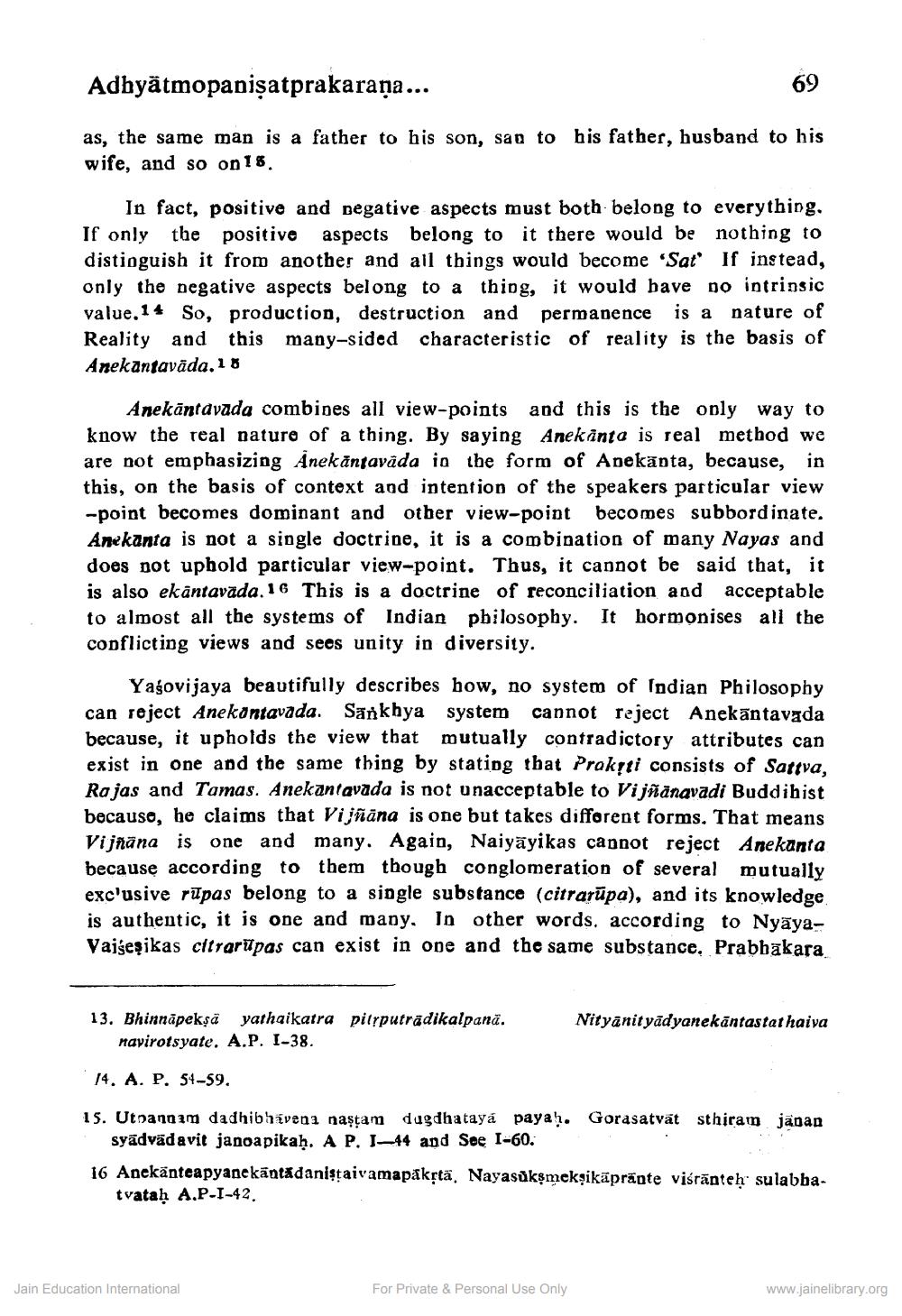________________
Adhyatmopanişatprakaraņa...
69
as, the same man is a father to his son, san to his father, husband to his wife, and so on 18.
In fact, positive and negative aspects must both belong to everything. If only the positive aspects belong to it there would be nothing to distioguish it from another and all things would become 'Sat* If instead, only the negative aspects belong to a thing, it would bave no intrinsic value. 14 So, production, destruction and permanence is a nature of Reality and this many-sided characteristic of reality is the basis of Anekantavāda. 18
Anekāntavada combines all view-points and this is the only way to know the real nature of a thing. By saying Anekanta is real method we are not emphasizing Anekantavada in the form of Anekāpta, because, in this, on the basis of context and intention of the speakers particular view -point becomes dominant and other view-point becomes subbordinate. Anekanta is not a single doctrine, it is a combination of many Nayas and does not uphold particular view-point. Thus, it cannot be said that, it is also ekantavada. 16 This is a doctrine of reconciliation and acceptable to almost all the systems of Indian pbilosophy. It hormonises all the conflicting views and sees unity in diversity.
Yagovijaya beautifully describes how, no system of Indian Philosophy can reject Anekantavada. Sankhya system cannot reject Anekāntavada because, it upholds the view that mutually contradictory attributes can exist in one and the same thing by stating that Prokti consists of Sativa, Rajas and Tamas. Anekantavada is not unacceptable to Vijñānavadi Buddibist because, he claims that Vijñāna is one but takes different forms. That means Vijñāna is one and many. Again, Naiyāyikas cannot reject Anekanta because according to them though conglomeration of several mutually exclusive rūpas belong to a single substance (citrarūpa), and its knowledge is authentic, it is one and many. In other words, according to NyayaVaiseşikas citrarūpas can exist in one and the same substance, Prabbakara
13. Bhinnāpekşã yathaikatra pityputradikalpanā.
navirotsyate. A.P. I-38.
Nityanityādyanekāntastat haiva
14. A. P. 54-59.
15. Utmana am dadhibhävena naştam dugdhataya payah. Gorasatvat sthiram jāoan
syadvad avit janoapikah. A P. 1-44 and See I-60. 16 Anekanteapyanekāntadaniştaivamapakstä. Nayasükşmekşikāprānte viśranteh sulabba.
tvatah A.P-I-42.
Jain Education International
For Private & Personal Use Only
www.jainelibrary.org




